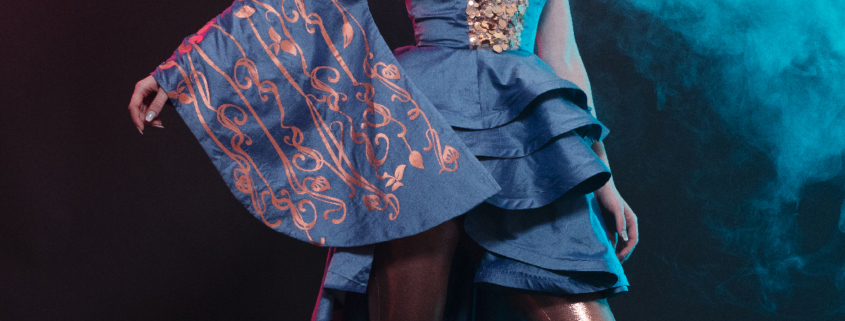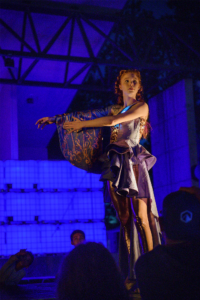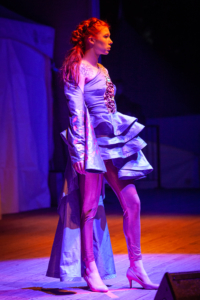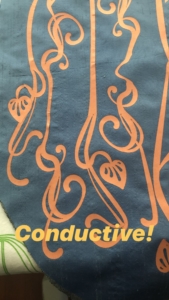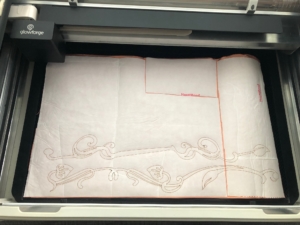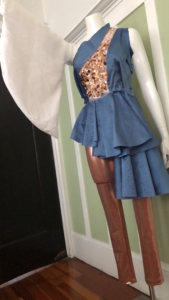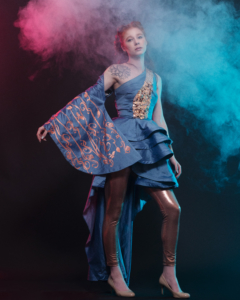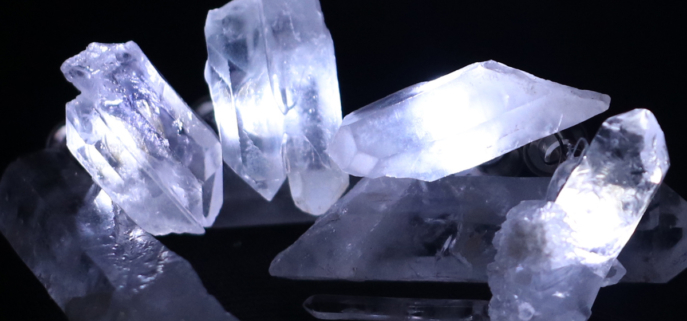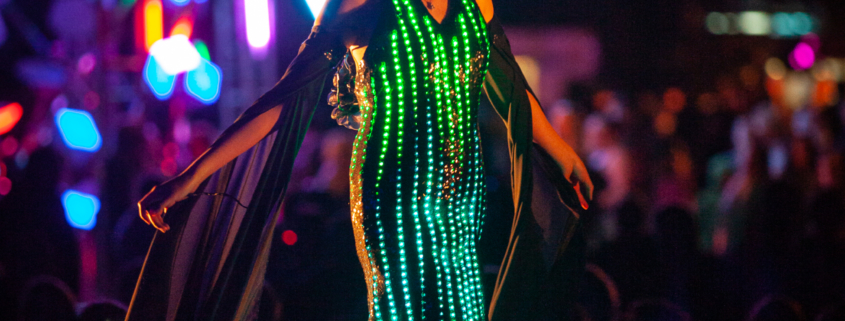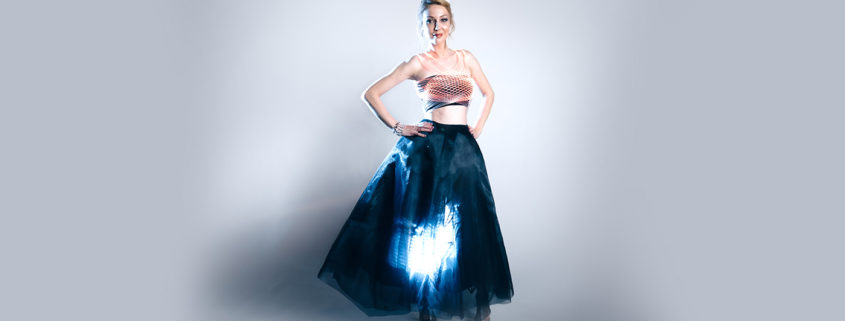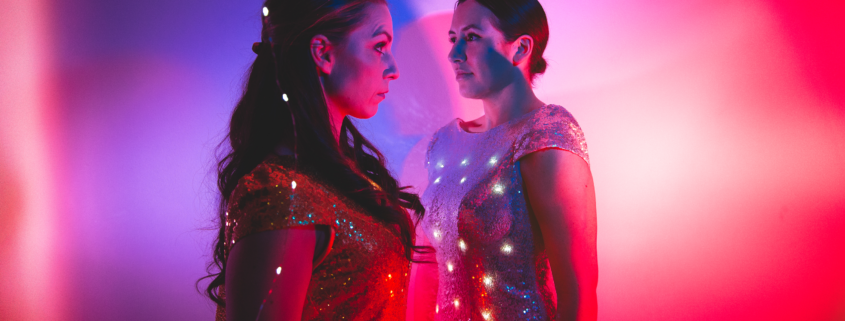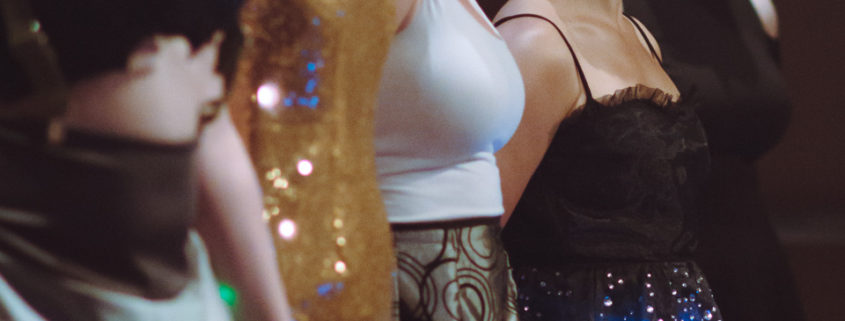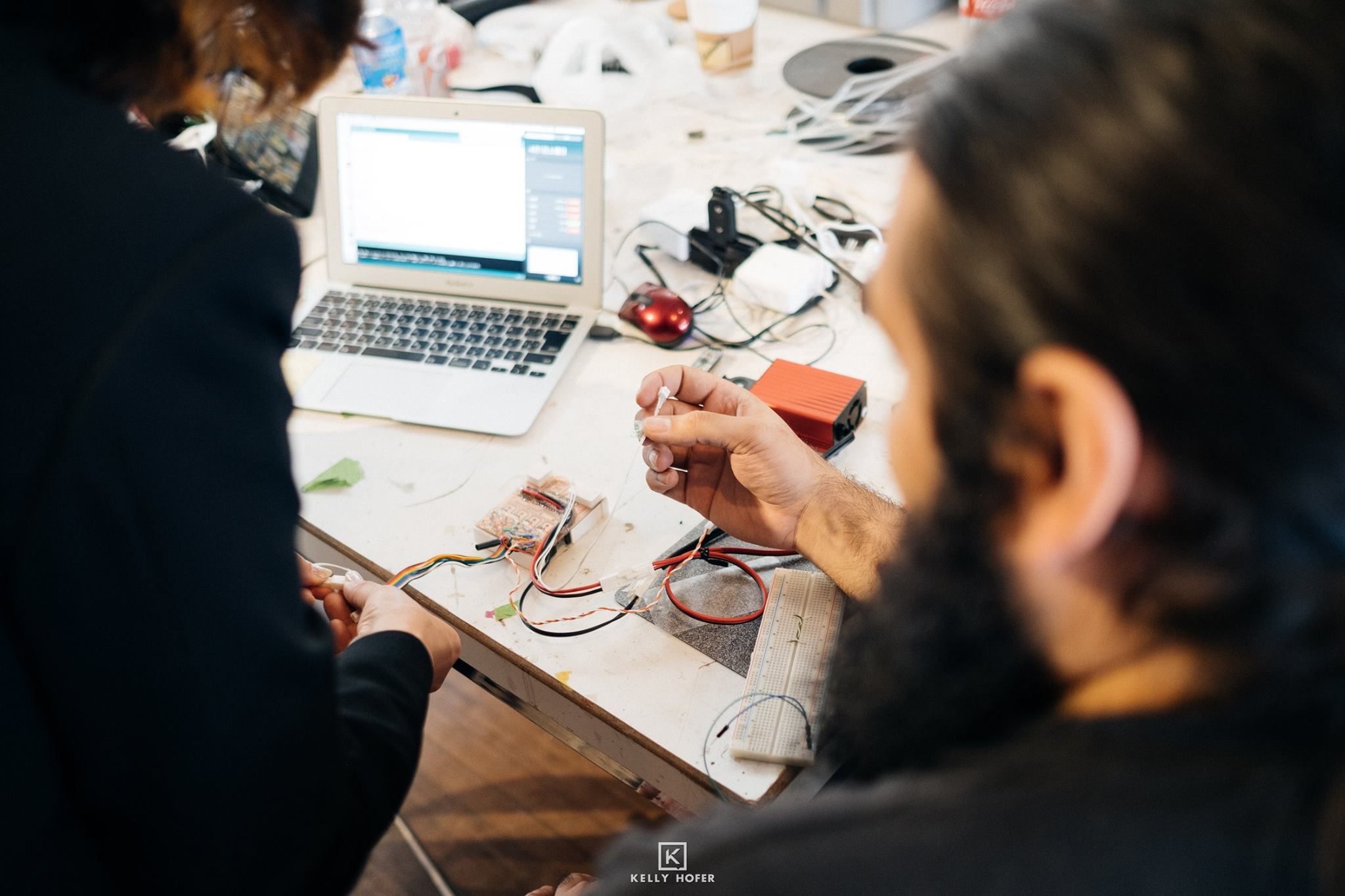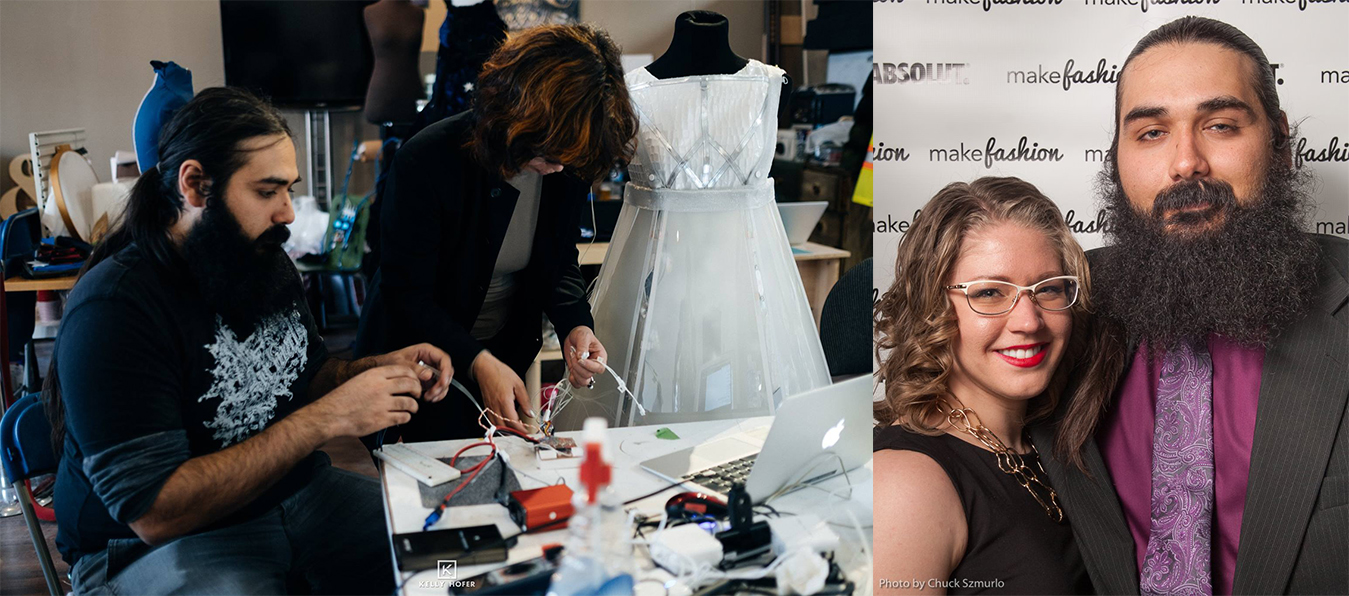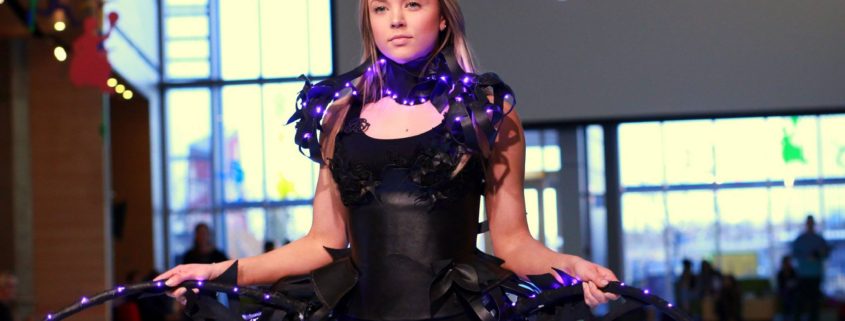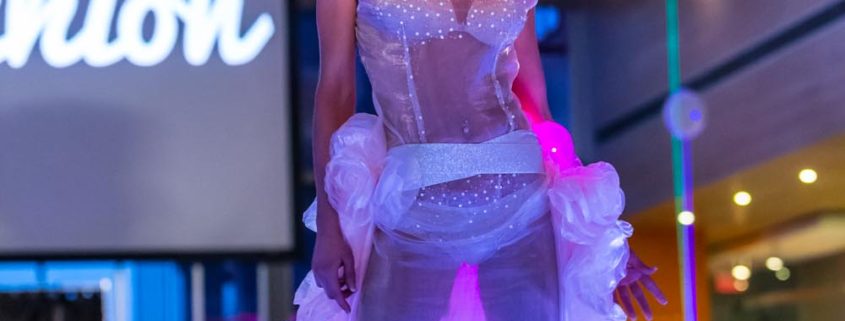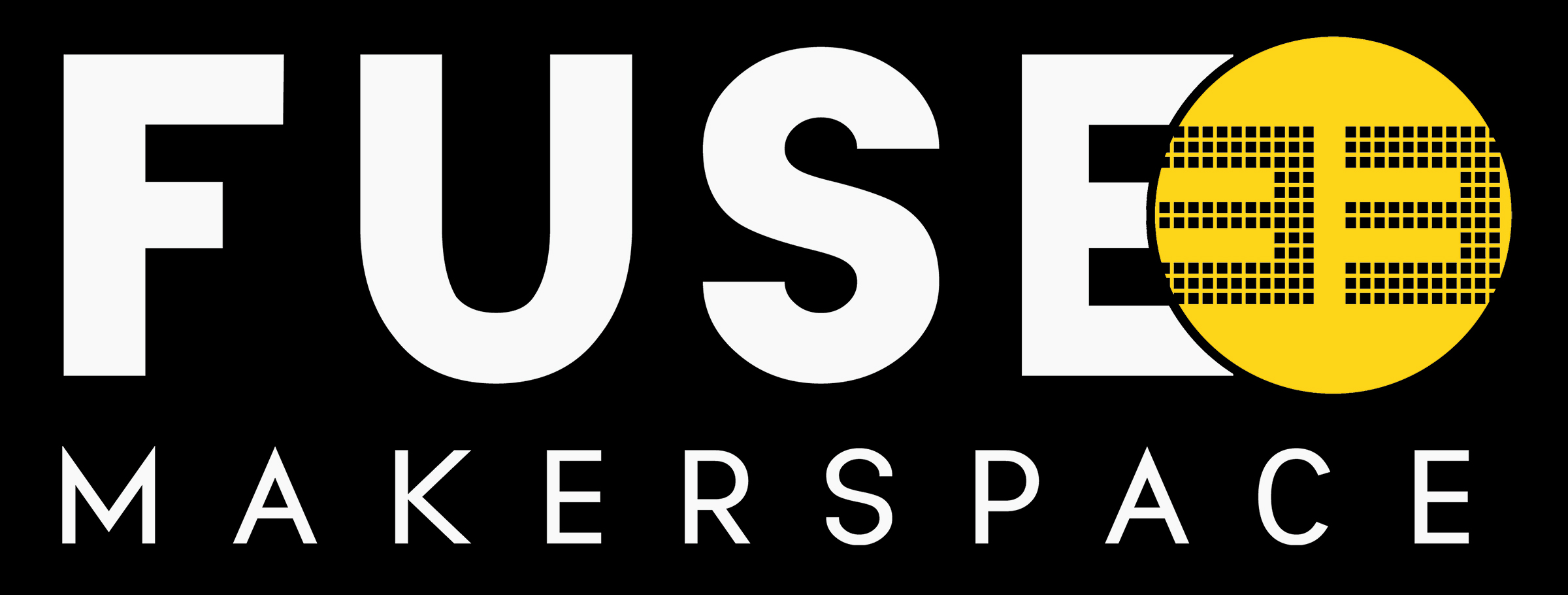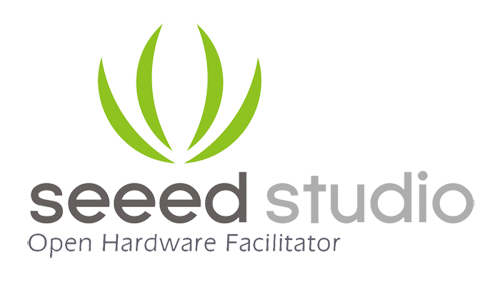Interview with Amped Atelier
Amped Atelier has previously worked with MakeFashion, and was part of this year’s 2019 MakeFashion Line-up. Amped Atelier created an interactive performance piece Conductive Melody that works also as a wearable musical instrument. Interactions such as capacitive touch, proximity, and gesture allow the user to produce beautiful electronically produced melodies. We had the honor to interview Amped Atelier this year about their process while creating Conductive Melody and their thoughts on working with fashion and technology.
Photographed by Brandie Sunley (left) and Jeff Mcdonald (right)
Modeled by Sydney
Q: How did the concept of interactive music performance develop?
We love fashion tech because of the possibilities for expanding the meaning of clothes beyond visual messages. This project adds machine learning into the human experience of wearing clothes and artistic performance. Machine learning is a form of AI where a computer algorithm analyses and stores data over time and then uses this data to make decisions and predict future outcomes. The simple inputs from the garment are expanded into a full musical piece.
Q: What was the inspiration behind the garment?
This piece was inspired by capacitive touch projects like the Makey Makey that uses everyday objects, like bananas, as a piano. The conductive fabric and thread that are used in fashion tech make fantastic capacitive touch elements.
Q: What came first? Garment, music, gesture?
This project began with experimenting with the machine learning program, Piano Genie. Piano Genie maps 8 inputs to a full 88 key piano. We knew we wanted to use capacitive touch to control the inputs. We designed the garment around that idea to give the wearer full control over the inputs. The sleeve shape is reminiscent of a harp and the conductive fabric that makes up the harp strings was designed to be functional and decorative.
Q: What was the process? What was the initial concept like and how did it develop?
In developing this piece we experimented with several different ways to use conductive materials. We tried using conductive thread with weaving and embroidery. Both were effective in small pieces but very time consuming to make on the scale we wanted for this project. We combined new fabrication techniques with traditional fabric craft by using a CNC laser cutter to cut appliques out of conductive fabric to use as our 8 key inputs.<
Q: What challenges did you face, and how did you overcome it?
Ensuring the sound quality was good was a challenge in creating this piece. In order to get good sound we used a Raspberry Pi, which is a mini computer, instead of a simpler system, like a microcontroller that we use for most of our designs. We needed to do a lot of research to find other projects using Raspberry Pi to make music and how those projects worked.
Q: What was the process in creating and selecting the sounds?
Piano Genie produces synthesized sounds and uses machine learning to take the 8 piano “keys” on the sleeve and use that input to make music as if it were a full piano keyboard. Simply running a hand across all of the conductive keys produces interesting music. With some practice a person could learn to “play” their clothes.
Q: What are some challenges the team faces while creating a wearable technology?
Designing robust electronics that can stand up to normal wear and tear is a major challenge in creating wearable technology. Since we started making fashion tech about 5 years ago we’ve seen major improvements in the size of wearable components and in the flexibility of materials. But it is still difficult to design a complex piece that does not need constant repair and maintenance.
Q: What aspect of the process is your favorite? Least favorite?
Brainstorming designs and creating project ideas are Sahrye’s favorite part of the process. Her least favorite part is ironing. Hal’s favorite part is when it all comes together and seeing the design on the MakeFashion runway.
Q: What did you prioritize while creating the garment?
It is important to us that the electronics are fully integrated into the look of the garment and that each piece looks good both with and without lights and electronic elements. For Conductive Melody we wanted the capacitive touch interface to be beautiful and spent a lot of time designing the art nouveau inspired copper fabric keys.
Photographed by Eluvier Acosta (right)
Q: What was your intent in creating an interactive garment?What kind of experience did you want to produce between the audience or wearer and the garment?
We always want the person wearing the garment, or the audience that is viewing it, to feel as if they have some part in controlling the experience. For Conductive Melody, and our previous MakeFashion piece, Acceleration, the electronic elements are all controlled by the model wearing the piece. The electronic outputs in light and sound are all part of what the model wants to perform and what experience they want to share with the audience. Our first two MakeFashion pieces, Reflections and Mimic, had elements that could be controlled by another person through bluetooth or an external color sensor. Those projects brought the audience into the piece by allowing them input into what they are seeing and experiencing.
Q: What are your thoughts on the future of interactive wear in the fashion industry?
The allure of fashion tech is in personalization. When people see our designs on the runway they want to have pieces that represent their vision and design. A challenge for the industry is in making mass-produced designs that also have the capacity for personalization.
Q: How did come across the collaboration of LED tech and fashion? / What made you drawn into the fusion of tech and art?
We met Shannon Hoover and Maria Elena at the Bay Area Maker Faire. We had already started adding LEDs and electroluminescent wire to clothes and costumes but had not made any truly interactive fashion pieces. MakeFashion introduced us to a community of designers who were welcoming and innovative and that allowed us to develop new ideas in a supportive environment.
Q: What advice do you have for incoming designers?
Spend a decent amount of time planning your designs and testing the various elements before beginning a new piece. You don’t have to reinvent the wheel. Look for tutorials or other designs that use elements that you want in your fashion piece. Our first piece, Reflections, has a bluetooth controlled matrix that scrolls custom text. We used an Adafruit tutorial for a hat to learn how to make a similar electronic project and then expanded it for use in our fashion piece.

